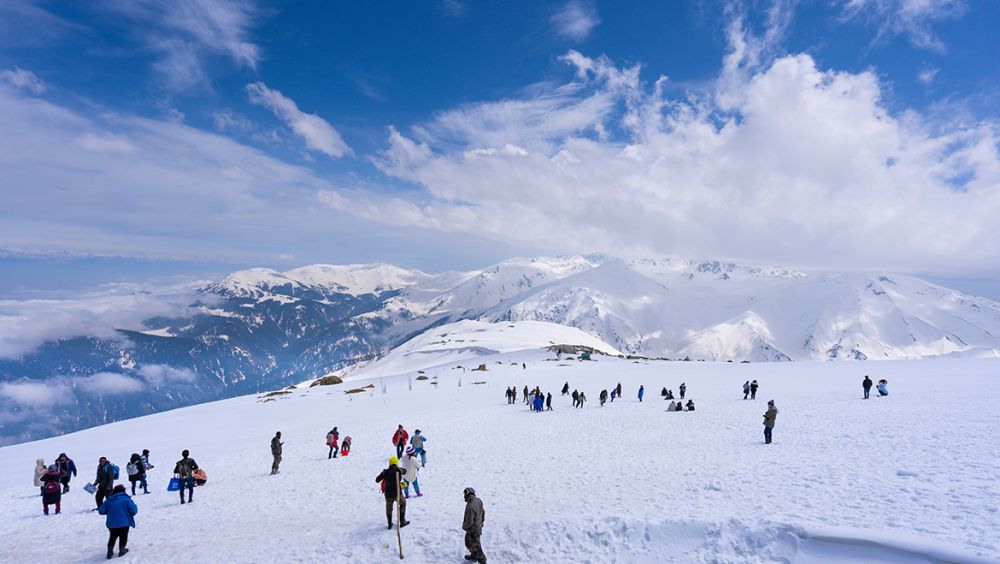

Nestled in the Pir Panjal Range of the Himalayas, Apharwat Peak stands as a testament to the natural beauty of Gulmarg, a town in the Baramulla district of Kashmir. Historically, Gulmarg has been a retreat for emperors and later for British colonial officers escaping the summer heat of the Indian plains. With its lush green meadows, beautiful landscapes, and pristine snow-clad mountains, it’s not surprising that it evolved into a popular tourist destination.
Tourism in Gulmarg began in the late 19th century when British civil servants started using the area as a holiday resort. The development of Gulmarg Golf Club in 1904, which now holds the distinction of being the highest green golf course in the world, marked one of the earliest tourism infrastructures in the region. By the early 20th century, Gulmarg was home to church services and various colonial entertainment activities.
The introduction of winter sports marked a significant turning point in Gulmarg's tourism history. With the establishment of the Gulmarg Ski Club and the eventual introduction of modern ski facilities, including gondolas and chair lifts, winter tourism gained immense popularity. The heavy snowfall of the region made it an excellent location for snowboarding, skiing, and ice skating.
In the contemporary era, Apharwat Peak has emerged as a pivotal point of interest in Gulmarg for tourists worldwide. At an altitude of about 4,200 meters (13,780 feet), it has become a paradise for adventure enthusiasts and lovers of nature. The installation of the Gulmarg Gondola, one of the highest in the world, makes the peak easily accessible while providing breathtaking views of the valley.
The latest trends in tourism at Apharwat Peak involve ecological and sustainable tourism practices, aiming to preserve the natural beauty of the region while accommodating tourists. Adventure tourism also continues to soar with heli-skiing, trekking, and mountain biking becoming increasingly popular. Additionally, with the rise of digital nomadism and remote work culture, more people are seeking destinations such as Apharwat Peak that offer tranquility and inspiration.
Despite the booming tourist interest, the region faces challenges such as ecological sustainability and regional conflicts that can affect the flow of tourism. Efforts are continually made to ensure that tourism development does not come at the cost of the environment or the local culture. The future of tourism at Apharwat Peak seems geared towards a balance between advancement and preservation, attempting to maintain the destination's allure while safeguarding its future.
Whether you're looking for a serene retreat or an adrenaline-packed adventure, Apharwat Peak in Gulmarg ever remains a jewel in the crown of Kashmiri tourism.